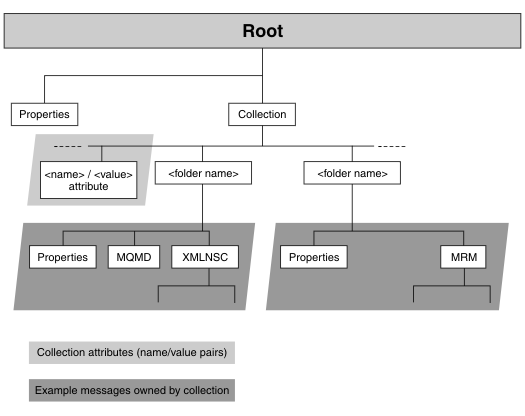- Create an application, library, or integration project.
- For background information, read Message collections.
A message collection is a message that consists of a Properties header and a single domain element named Collection. The Collection folder contains a number of child messages, each of which can contain a Properties folder, a number of headers (such as MQMD), and a body. A message collection can also have zero or more attributes that are name/value pairs. The name of an attribute must be unique within a message collection. A standard attribute for the message collection is an attribute called CollectionName.
The following figure shows an example of a message collection structure.

You can create a message collection by using ESQL to group messages together for parsing, or create a message collection that must be constructed to represent a particular data structure, such as a CICS channel data structure.
To configure a message collection by using ESQL, complete the following steps:
 Last updated Friday, 21 July 2017
Last updated Friday, 21 July 2017